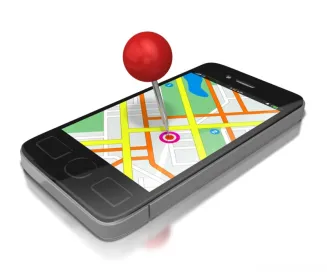If you don’t know what geofencing is, I will give you some articles to read so you can become better educated on exactly what it is and how it is used to track you. It’s all a bit creepy, but is a good thing to understand. The key to geofencing is users who leave their location-based services and Bluetooth technology on all the time. These two technologies can pinpoint where you are and where you are going, and can share your detailed location with third parties.
Although a bit dated, a 2019 blog in Comaritech gives a good background on what geofencing is and what privacy concerns it presents. The blog, What is geofencing, how does it work, what are the privacy concerns? explains that geofencing “makes use of location data to set up an invisible barrier in the real world….You can’t see or feel anything when passing through a geofence, but if carrying a connected device, the system knows when you enter or exit the electronic boundary. Think of them similar to the invisible electric fences popular with canine owners, thankfully without the shock.”
However, geofencing can collect more information than the consumer is aware of and can provide detailed information about the user and the places the user visits. An example presented in the blog highlights a dispute between the Massachusetts Attorney General’s Office and Copley Advertising, which set up geofencing around women’s reproductive health clinics, then sent anti-abortion ads and messages to those who visited the clinic and shared the geolocation data with third-party advertisers.
A more recent Electronic Frontier Foundation article, Inside Fog Data Science, the Secretive Company Selling Mass Surveillance to Local Police, further explains how the technology is used for many purposes, including providing law enforcement with specific location data of individuals without the need to obtain a warrant. Without getting into the controversy around that issue, the article is helpful in understanding how private for-profit companies can collect and use detailed geolocation data for any purpose at all, and how the data can be used to track our every movement.
According to the article, the company, Fog Data Science, “claims that it has ‘billions’ of data points about ‘over 250 million’ devices and that its data can be used to learn about where its subjects work, live, and associate.” It sells its information to customers that can then “access detailed histories of regular people’s lives.” In addition, the article states that “Fog touts the use of its service for ‘pattern of life’ analyses that reveal where the device owner sleeps, works, studies, worships, and associates. This can tie an ‘anonymous’ device to a specific, named individual.”
The company obtains the data from third-party apps on smartphones. When users download these apps, they are notified that the company can share the location data with third parties. These third parties are primarily data brokers who sell our data for their own profit.
The article provides a thorough outline of how geofencing works, how the data are collected and sold, and how geofencing can be used. It is a reminder to all of us to be conscious and deliberate when turning on location-based services and Bluetooth-enabled capabilities on our devices and was an eye-opener even for me, someone who believes strongly in the right to privacy.
Finally, here’s one more article that explains how geofencing and Bluetooth can be used to pinpoint individuals in specific detail. Bold Business Insights’ Geofencing and the Consumer—An Unreasonable Privacy Violation explains how geofencing is used to target consumers for marketing purposes, but posits that companies may wish to look at consumer privacy from “a more ethical base.” If companies take the lead in protecting consumer privacy, “this reflects true corporate social responsibility, especially since businesses are best suited to identify and implement the most effective solutions.”
To check the apps you are allowing to access your geolocation data, go to Settings/Privacy/Location Services and look at the list. All of those apps have your permission to track your every move and sell that information to other companies. To whom you give your data is a personal choice. But make that an educated personal choice. If you don’t want those apps to have access to your every move, turn on the location services only when you are using the app or delete the app if you don’t use it.



 />i
/>i
